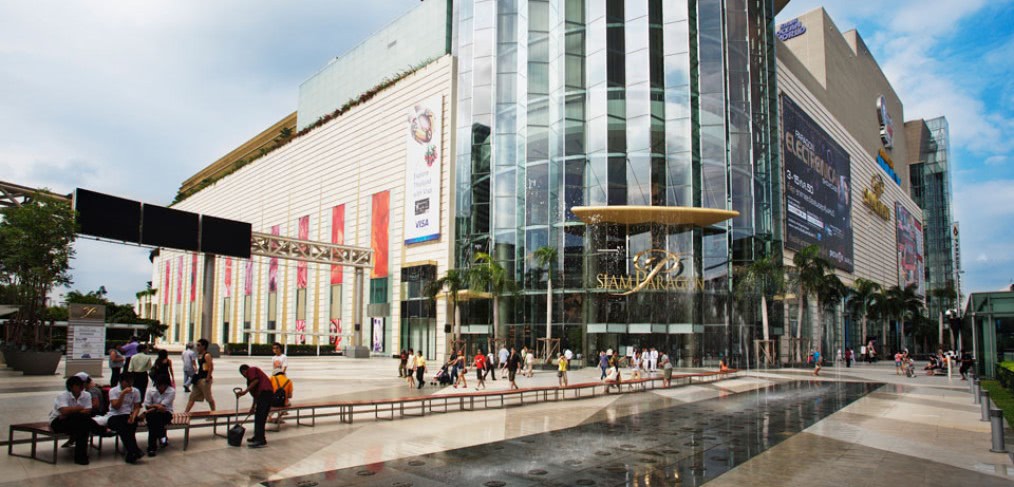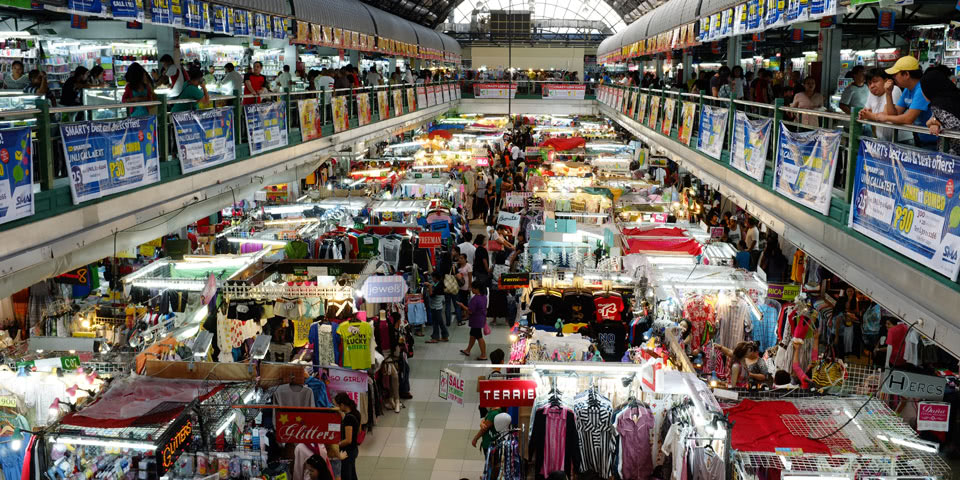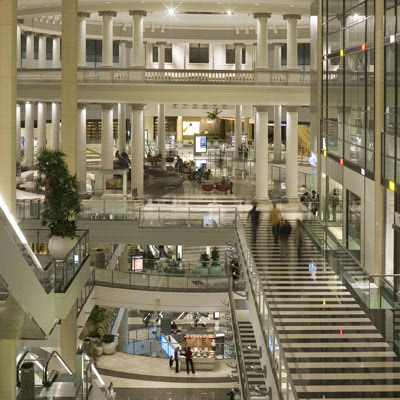
Flexible Space and the Retail Revolution
Imagine a new clothing line debuts its first lookbook online. Items are available to browse online and in-person, but the catch is that you don’t know where their physical storefront is…because they’re not there yet. And when they are, they might not be there for very long.
It might not sound like a very effective business model for a retailer, but the phenomenon known as the pop-up shop long ago transcended trendy and continues to have a huge impact on the retail industry, which is already experiencing a number of substantial shifts in the form of ever evolving omnichannel strategies and digital technology that customizes, personalizes and / or expedites the shopping experience. Inherently flexible, temporary and resourceful in nature, pop-up services like Storefront and Vacant maximize the benefit of underutilized space and use short-term availability to their advantage.
In an era where traditional shopping centers struggle to find their identity, architects, designers and developers are engaged in the challenge of creating spaces responsive to this new reality. Rather than reacting combatively to the fresh, lively, ephemeral retail experiences offered by the competition, let’s learn from them. What’s so wildly appealing about the pop-up shop? How can we translate this concept of flexible space into long-term retail success?
Been There, Done That
Consumers today are fiercely discerning and demand a greater return on their time investment. RTKL has often spoken to the importance of retail in generating successful mixed-use communities, and the idea is that there’s something different to be experienced—a reason for people to come, stay for a while and eventually come back for more. Endowing a retail space program with flexible uses allows a shopping center to offer a wider range of engaging experiences.
Long before pop-up shops became popular, CallisonRTKL worked on a project in Bangkok, Thailand with a client interested in the innovative potential of flexible space. Siam Paragon, coined “the Pride of Bangkok,” was the first mega shopping complex in Thailand. It opened in 2005 with over 6,500 square feet of programmable space close to the main entrance that could be used for anything, anytime. The result? Something new is always happening in the heart of the shopping center—increasing interest, repeat foot traffic and revenue, and turning Siam Paragon into a celebrated landmark.
Another RTKL project, Industria at Circulo Verde, is still under construction, but the design plans employ a zoning approach that positions flexible space along the main road and common areas. An open market zone hosts specialty events and celebrity pop-up market kiosks; longer-lease zones tailored for international and boutique brands in a concentrated retail district are balanced with smaller, short-term leasable spaces for art galleries and the like; and a night market zone enlivens the complex after the main retail section has closed.
Messy—and Profitable—Vitality
For a less structured but still successful way to achieve variety, take a look at the Greenhills Shopping Center Tiangge in Manila, Philippines. The Tiangge is a massive market composed of thousands of small stalls featuring an array of goods clustered categorically. While the kiosk format is tried and true, the developer, Ortigas, reconfigures the layout every few weeks based on retailer performance, lending a sort of messy vitality to what has proven itself a very profitable endeavor. For shoppers, it’s about bargain hunting, excitement and getting lost in the organized chaos. Why not capture the spirit of the Tiangge, tailor it appropriately for market demographics, and bring it into the traditional shopping center?
While these spaces may be very large, they can pay for themselves. From mixed-use to messy vitality, short-term revenue engines can be just as profitable, if not more so, than long-term tenant leases. At PSFK’s Future Realities of Retail in November 2014, Storefront founder Tristan Pollock quoted sales facts and figures validating the efficacy of the short-term lease model—among them, that 30% of custom menswear retailer Indochino’s revenue now comes from pop-up shops.
Make Room for the Competition
Instead of battling the pop-ups and e-commerce, why not invite them in? Whether developers are starting new or repurposing an existing center, allocating a certain percentage of space for shorter leases for online or start-up retailers, or even local craftsman, keeps things fresh while broadening the base of tenant and consumer relationships.
There’s proof that you can teach an older project new tricks. In the late 1990s and early 2000s, CallisonRTKL led the redevelopment of San Francisco’s landmark Emporium Building and its preserved century-old Market Street façade, merging it with the adjacent San Francisco Shopping Centre to form Westfield San Francisco Centre. The design added one million square feet to the existing structure, making it the largest urban shopping center west of the Mississippi. This spring, Westfield will launch Bespoke—37,000 square feet of co-working, demonstration and event space amidst the 200 existing retailers and restaurants “where tech and retail marketplaces converge.” According to retail strategist Lynn Switanowski, founder of Creative Business Consulting Group in an article published by SFGate after the announcement was made last fall, “Bespoke reflects a trend of treating the mall as an entertainment destination.” It also harnesses the golden opportunity in merging e-tailing and retailing as online retailers look to establish a physical presence.
If You Can’t Beat ‘Em…
Given retail’s increasingly rapid change of pace, designing for the moment doesn’t really make sense. For the sake of sustainability and greater return on investment, it’s clear that we need to design for a flexible future. So, in the case of the pop-up shop versus traditional shopping malls—if you can’t beat ’em, join ’em.
Images: Mick Ryan; Flickr – Juan Paulo Gutierrez


